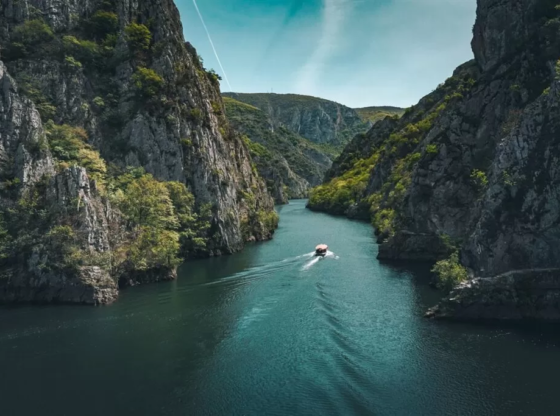1. Socotra, Yemen
Located in the Arabian Sea, Socotra is an archipelago unlike any other. Its surreal landscapes and unique biodiversity have earned it the nickname “Galápagos of the Indian Ocean.” The island is home to the Dragon’s Blood Tree, which produces a red sap that was once believed to be the blood of dragons. With its alien-like flora and fauna, stunning beaches, and minimal tourist infrastructure, Socotra offers an unparalleled sense of adventure.
2. Faroe Islands, Denmark
Nestled between Iceland and Norway, the Faroe Islands are a remote group of 18 volcanic islands. Known for their dramatic cliffs, lush green valleys, and cascading waterfalls, the islands provide a perfect backdrop for hiking, bird watching, and photography. The rugged terrain and unpredictable weather add to the allure of these pristine islands. Despite their stunning beauty, the Faroe Islands remain relatively unexplored due to their remote location.
3. Bhutan
The Kingdom of Bhutan, located in the Eastern Himalayas, is a land of monasteries, fortresses, and dramatic landscapes. Known for its Gross National Happiness index, Bhutan offers a unique perspective on life and development. The country’s strict tourism policy limits the number of visitors, preserving its culture and environment. Highlights include the cliffside Tiger’s Nest Monastery, the vibrant festivals, and the serene valleys of Phobjikha and Bumthang.
4. Svaneti, Georgia
Svaneti is a historic region in northwestern Georgia, nestled in the Caucasus Mountains. This remote area is known for its medieval stone towers, picturesque villages, and stunning mountain scenery. The Svan people, with their distinct language and traditions, add to the region’s charm. Svaneti offers excellent opportunities for hiking, skiing, and cultural immersion, all in a setting that feels like a step back in time.
5. Taveuni, Fiji
While Fiji is famous for its luxury resorts and crystal-clear waters, Taveuni Island remains a relatively undiscovered paradise. Known as the “Garden Island” for its lush rainforests and abundant flora, Taveuni offers a different side of Fiji. Visitors can explore Bouma National Heritage Park, swim in the natural waterslides of Waitavala, and snorkel in the Rainbow Reef, renowned for its vibrant coral and marine life.
Also Read: Madhu Babu Pension Yojana: Empowering the Vulnerable in Odisha
6. Raja Ampat, Indonesia
Raja Ampat, an archipelago of over 1,500 small islands off the northwest coast of New Guinea, is a diver’s paradise. With some of the richest marine biodiversity in the world, it’s a dream destination for underwater enthusiasts. Above water, the islands offer stunning karst landscapes, hidden lagoons, and pristine beaches. Despite its natural beauty, Raja Ampat remains relatively untouched by mass tourism.
7. Comoros
The Comoros Islands, located in the Indian Ocean between Madagascar and Mozambique, are one of Africa’s best-kept secrets. With their volcanic landscapes, white sandy beaches, and unique blend of African, Arab, and French cultures, the islands offer a rich and diverse experience. Highlights include the active volcano Mount Karthala, the fragrant ylang-ylang plantations, and the vibrant marine life.
8. Karakoram Highway, Pakistan
Often described as the “eighth wonder of the world,” the Karakoram Highway is the highest paved international road, connecting Pakistan and China. This engineering marvel traverses some of the most stunning landscapes on Earth, including the towering peaks of the Karakoram Range. Along the way, travelers can explore ancient Silk Road sites, vibrant markets, and breathtaking valleys like Hunza and Skardu.
9. Luang Namtha, Laos
Luang Namtha, located in northern Laos, is a hidden gem for eco-tourism and cultural exploration. Surrounded by lush mountains and home to diverse ethnic groups, the area offers trekking, cycling, and river journeys. Visitors can immerse themselves in the traditional lifestyles of the local communities, explore the Nam Ha National Protected Area, and enjoy the serene beauty of the Namtha River.
10. Tristan da Cunha
Tristan da Cunha, the most remote inhabited archipelago in the world, lies in the South Atlantic Ocean. With a population of less than 300 people, this British Overseas Territory is accessible only by a seven-day boat trip from South Africa. The island’s rugged cliffs, unique wildlife, and tight-knit community offer a rare and fascinating travel experience. Activities include hiking to the volcanic Queen Mary’s Peak, bird watching, and learning about the island’s unique history and culture.
Conclusion
Exploring these unexplored destinations offers an opportunity to experience the world in its most authentic and unspoiled form. These hidden gems provide a sense of discovery and adventure that popular tourist destinations often lack. Whether you’re drawn to dramatic landscapes, rich cultures, or unique wildlife, these destinations promise unforgettable experiences and stories to tell. So pack your bags, step off the beaten path, and discover the magic of the world’s hidden treasures.
Also Read: Tulks: The Language Expert
FAQS
2. Why should I visit unexplored destinations?
Visiting unexplored destinations allows you to experience unique landscapes, cultures, and adventures that are not overrun by tourists. It provides a sense of discovery and often offers more authentic and personal travel experiences.
3. Are unexplored destinations safe to visit?
While many unexplored destinations are safe, it’s important to research and prepare adequately. Some locations may have limited medical facilities, challenging terrain, or political instability. Always check travel advisories and consult local experts or tour operators.
4. How can I ensure a responsible visit to an unexplored destination?
Travel responsibly by respecting local cultures, minimizing your environmental impact, and supporting local businesses. Follow guidelines on sustainable tourism and be mindful of your footprint on these pristine places.
5. Do unexplored destinations have accommodation options?
Travel responsibly by respecting local cultures, minimizing your environmental impact, and supporting local businesses. Follow guidelines on sustainable tourism and be mindful of your footprint on these pristine places.


